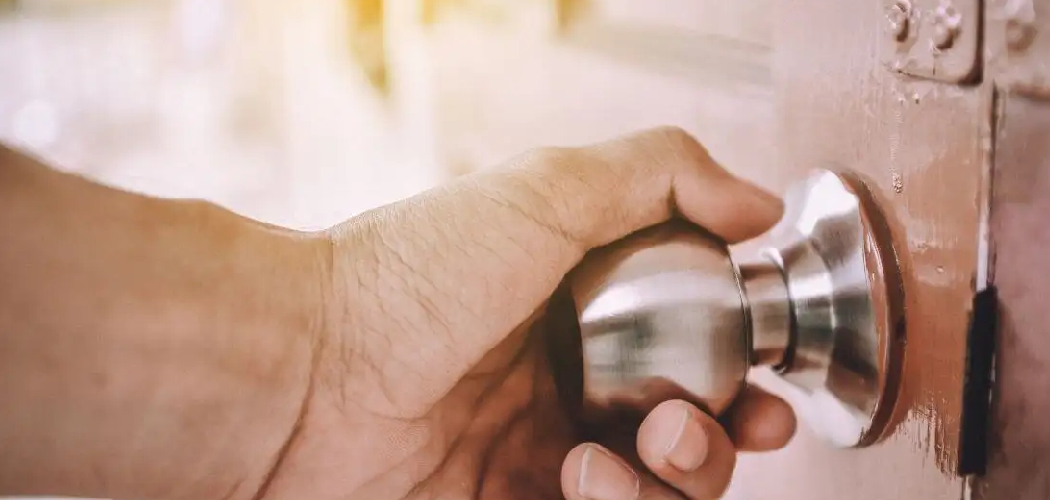Discovering that your door latch is broken can be a frustrating experience, especially if it leaves you unable to access important areas of your home or office.
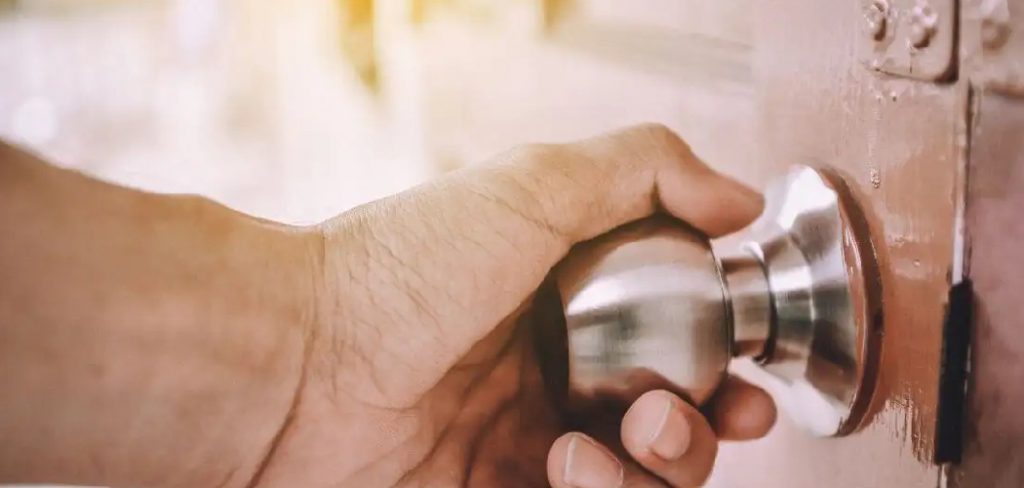
While it may seem like a task best left to professional locksmiths, there are several methods you can try on your own to open a door with a broken latch.
This guide on how to open door with broken latch will walk you through practical solutions using common household tools, helping you regain access quickly and efficiently without causing further damage.
What is a Door Latch?
A door latch is a spring-loaded mechanism that keeps your door closed and locked. When you turn the doorknob, the latch retracts and allows the door to open. However, if your latch is broken or malfunctioning, it may not retract properly, preventing you from opening the door.
You may also encounter a broken latch if your door has been forced open or if the latch is old and worn out. Whatever the cause, it’s important to address the issue as soon as possible to ensure your home or office remains secure.
Why You Should Fix a Broken Latch?
Aside from the obvious inconvenience of not being able to open your door, here are some other reasons why you should fix a broken latch:
Security:
A faulty latch leaves your home or office vulnerable to break-ins and trespassing.
Safety:
In case of an emergency, a broken latch may prevent quick access to exits or entry for emergency services.
Damage Prevention:
A door with a broken latch can cause damage if it slams shut unexpectedly, potentially breaking windows or hurting someone’s fingers.
Cost Savings:
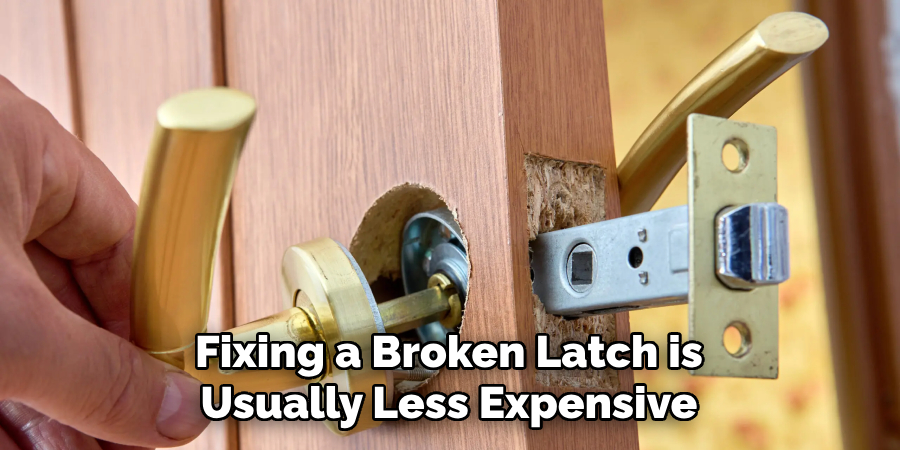
Fixing a broken latch is usually less expensive than replacing the entire door or calling a locksmith. Plus, you may be able to fix it yourself with simple tools.
8 Step-by-step Guidelines on How to Open Door With Broken Latch
Step 1: Use a Screwdriver
To begin, you’ll need a flathead or Phillips screwdriver, depending on the type of screws used in your door’s latch assembly. Insert the screwdriver into the gap between the door and the frame, where the latch is located. Carefully wiggle the screwdriver to try to manually retract the latch.
You may need to apply some gentle pressure to move the latch mechanism back into the door, allowing you to open it. Be cautious not to force the screwdriver too hard, as this could cause further damage to the door or the latch assembly.
If this method doesn’t work on the first try, don’t get discouraged—different doors may require slight adjustments in technique. Move on to the next step for more options.
Step 2: Try a Credit Card
If you don’t have a screwdriver on hand, you can also try using a credit card. Slide the card in between the door and the frame, near where the latch is located.
Apply pressure towards the door while wiggling or pushing the card. As with using a screwdriver, this method may require some patience and slight adjustments to properly release the latch.
The card you use should be sturdy enough to withstand the pressure without bending or snapping. If you’re worried about damaging your credit card, you can also use a plastic ID card, library card, or any other similarly sized and sturdy object.
Step 3: Use a Screwdriver and Hammer
If the first two methods don’t work, you can try using a screwdriver and hammer together. Insert the screwdriver into the latch mechanism and give it a few gentle taps with the hammer to help dislodge any stuck parts. Once again, be careful not to apply too much force and cause damage.
You can also try this method by using a small pry bar instead of a screwdriver for more leverage and control.
Step 4: Lubricate the Latch
If your latch is stuck due to rust or other debris, applying some lubricant may help loosen it up. You can use household oil, WD-40, or any other type of lubricant that you have on hand.
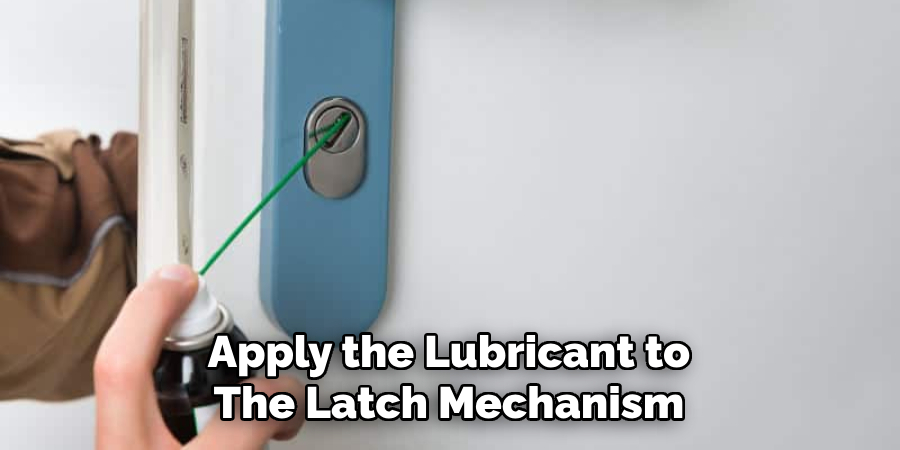
Spray or apply the lubricant to the latch mechanism through the gap between the door and frame, then try to manually retract the latch again.
Be mindful not to use too much lubricant as it could make the door handle slippery and difficult to grip.
Step 5: Loosen the Door Hinge Screws
In some cases, a broken latch may be caused by misaligned door hinges. If this is the case, you can try loosening the screws on the top hinge of your door slightly. This should create more space between the door and frame, allowing you to pull or push the door open.
Be sure not to loosen the screws too much, as it could cause your door to fall off its hinges completely. You may need a partner to hold onto the door while you loosen the screws.
Step 6: Remove the Door Handle
If all else fails, you can try removing the door handle to access the latch directly. Most door handles can be removed by unscrewing a few screws or bolts. Once the handle is off, you should be able to use pliers or a screwdriver to manually retract the latch and open the door.
Be sure to keep track of all the small pieces and screws from your door handle as you will need them when reassembling it later.
Step 7: Use a Drill
If you’re feeling more adventurous and have some basic DIY skills, you can try using a drill to remove the entire lock assembly from the door. This allows you to access the latch mechanism directly and manually operate it to open the door.
Keep in mind that this method may cause more damage to your door and should only be attempted if you feel comfortable using power tools.
Step 8: Call a Professional Locksmith
If all else fails, or if you’re not comfortable attempting any of these methods, it’s best to call a professional locksmith. They have specialized tools and expertise to safely and efficiently open your door without causing further damage.
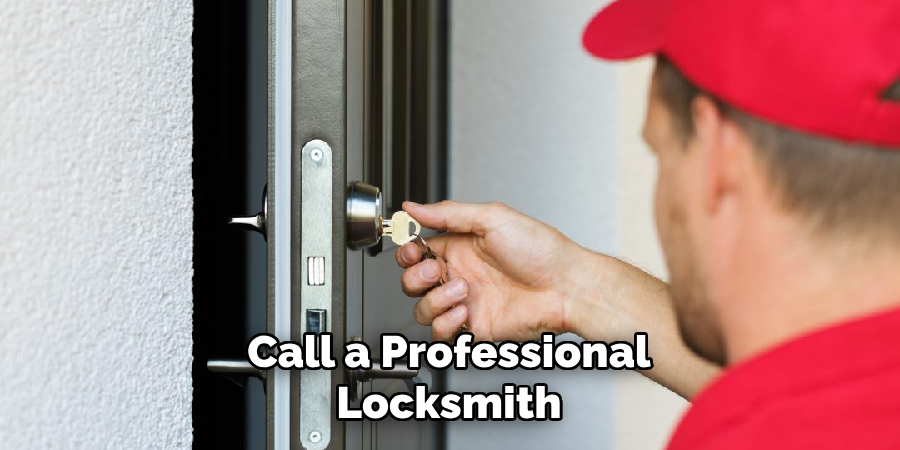
Following these step-by-step guidelines on how to open door with broken latch should help you open a door with a broken latch. Keep in mind that prevention is always better than cure, so be sure to regularly inspect and maintain your door’s latch to avoid any future problems.
As the saying goes, an ounce of prevention is worth a pound of cure! So take care of your latches and keep your home secure. Happy DIY-ing!
Additional Tips for Maintaining Your Door Latch
- Regularly clean and lubricate your latch to prevent debris buildup or rust.
- Check the alignment of your door hinges and make any necessary adjustments to ensure a smooth operation.
- If you notice any signs of wear or damage on your latch, replace it as soon as possible to prevent further issues.
- Consider upgrading to a stronger and more secure latch for added protection against break-ins and trespassing.
By following these tips and guidelines, you can help extend the lifespan of your door latch and maintain the safety and security of your home.
Don’t wait until it’s too late—regular maintenance is key to keeping your doors functioning properly. Stay safe! Thanks for reading!
Frequently Asked Questions
Q: Can I Use a Screwdriver to Open Any Type of Door With a Broken Latch?
A: It depends on the type of latch and how it is broken. In most cases, using a screwdriver is effective for opening simple latch mechanisms.
However, if the latch is broken in multiple places or if it’s a more complex lock mechanism, you may need to try alternative methods or call a professional locksmith.
Q: Can I Fix the Latch Myself?
A: It depends on your level of DIY skills and comfort with using tools. If you’re not confident in your abilities, it’s best to call a professional locksmith to avoid causing further damage to your door or lock.
However, simple maintenance tasks like cleaning and lubricating can be easily done by yourself.
Q: How Do I Know If My Door Latch Is Damaged?
A: Signs of a damaged latch include difficulty opening or closing the door, a loose or wobbly handle, and visible wear or damage on the latch mechanism.
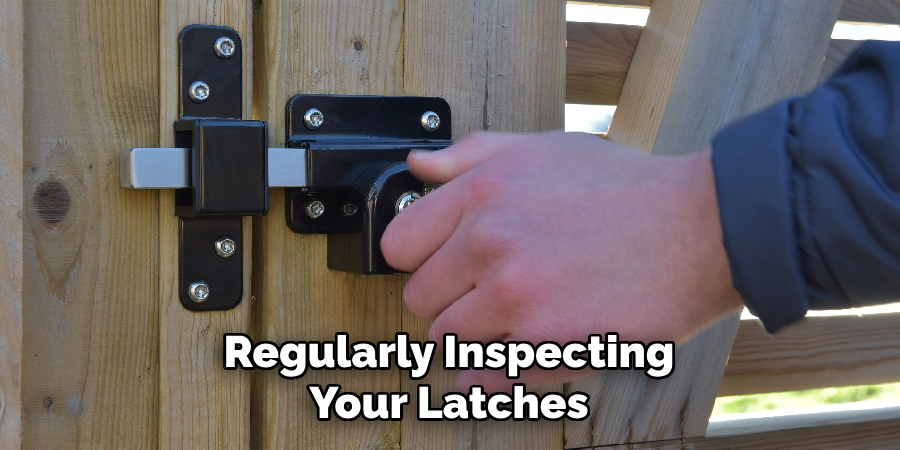
Regularly inspecting your latches for these signs can help you catch any issues early on and prevent them from becoming bigger problems. Happy DIY-ing!
Conclusion
In conclusion, dealing with a broken door latch can be a challenging task, but with the right tools and techniques, it can be managed effectively.
From using basic household items like a credit card to more advanced methods on how to open door with broken latch such as drilling out the lock, there are several approaches to try before resorting to professional help.
Regular maintenance and inspections of your door latches can also prevent such issues from arising in the first place.
By keeping your latches clean, well-lubricated, and properly aligned, you extend their lifespan and ensure the security of your home.
Remember, taking preventive measures today can save you from potential trouble in the future. Stay proactive and safe, and don’t hesitate to seek professional assistance when needed. Happy DIY-ing!

